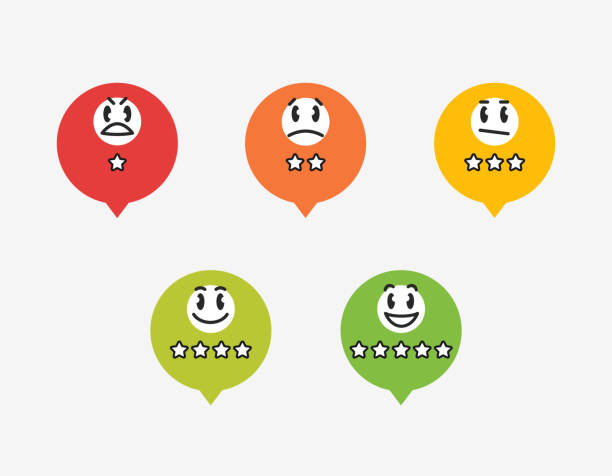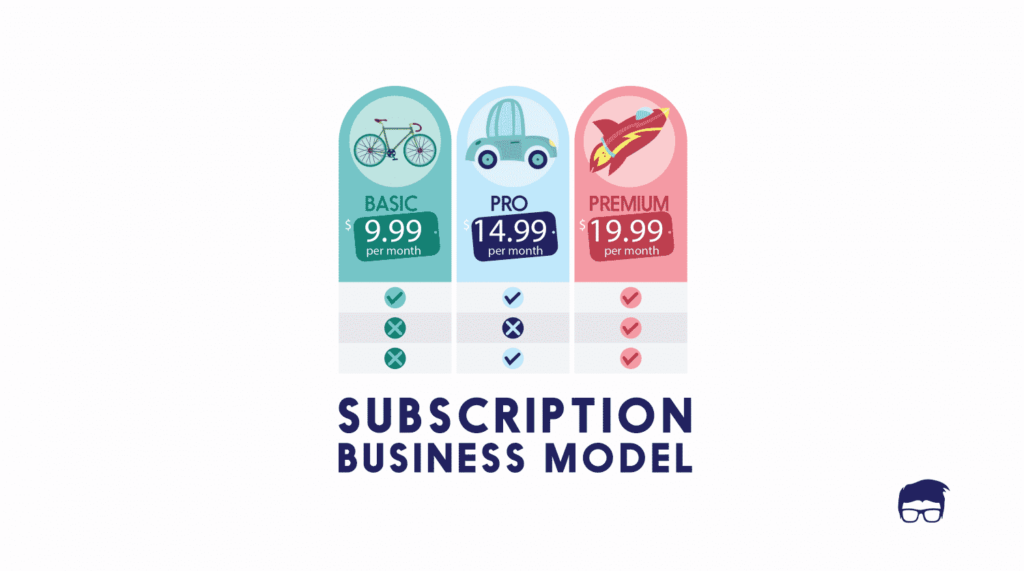


August 31, 2023
Eyes4Research
Today’s business landscape is fast-paced and ever-changing. Understanding the needs and preferences of customers is paramount for success. This is where market research steps in as a crucial tool that helps businesses stay ahead of the curve and directly contributes to satisfying customers. Here is how market research plays a pivotal role in meeting customer expectations.

Why Market Research Pinpoints Customer Needs
Market research involves gathering and analyzing data about your target audience. This information reveals what your audience truly wants, helping B2C businesses develop products and services that cater to their audience’s specific needs. By creating offerings that directly address their pain points, B2C businesses are naturally aligning with their expectations.
Tailored Products and Services
With market research insights, B2C businesses can fine-tune their products or services to match audience preferences. This leads to better-designed solutions that resonate with the audience and offer tangible value. Audiences are more likely to be satisfied when they receive products that align with their desires.
How Understanding the Audience Journey Enhances Customer Experience
An essential part of audience satisfaction is a positive experience. Market research aids in understanding the audience journey, enabling B2C businesses to identify pain points and streamline processes. By optimizing interactions at every touchpoint, B2C businesses create a seamless and enjoyable experience for their audience.
Market Research Creates Effective Communication
Knowing the audience through market research enables B2C companies to communicate with their audience in a way that resonates with them. Whether it’s marketing messaging or customer support interactions, tailored communication fosters a sense of understanding and connection, making audiences feel valued and appreciated.
Stay Ahead of Trends
Markets are dynamic, and trends evolve rapidly. Market research helps B2C companies stay ahead by identifying emerging trends and changing audience behaviors. By adapting offerings to align with these trends, B2C companies can show their commitment to keeping their audiences satisfied with innovative and relevant solutions.
Building Audience Trust
Transparency and authenticity are vital for building trust with audiences. Market research provides insights that allow B2C companies to be honest about what they can deliver. When audiences perceive that B2C businesses genuinely understand their needs, they are more likely to trust the brand and remain loyal customers.
Market research acts as the compass that guides B2C businesses toward audience satisfaction. By uncovering valuable insights and translating them into tailored products, improved audience experiences, and more effective communication, market research ensures that audiences not only get what they want but also feel valued and understood.
When B2C companies embrace market research, they are making a strategic move that creates lasting audience relationships and contributes to long-term success.
Read more about marketing and market research on the Eyes4Research blog. Eyes4Research also has everything B2C companies need to collect high-quality insights from consumers. Our panels are comprised of B2B, B2C, and specialty audiences ready to participate in your next research project. Learn more about our specialty panels here.
About the author:
An industry leader and influencer – Rudly Raphael specializes in all aspects of research logistical design involving quantitative methodology, implementing internal system infrastructure to streamline business processes, channelling communication and developing innovative research solutions to ensure Eyes4Research remains a competitive force in the marketplace. An entrepreneur, inventor (patent holder), blogger and writer – his articles have been published in various magazines such as Medium, Ebony Magazine, Bussiness2Community and also cited in various journals and academic publications.

August 30, 2023
Eyes4Research
A high panel response rate is crucial to gaining accurate insights and making informed decisions. A responsive panel can provide valuable data that drives business strategies, but achieving a substantial response rate can be challenging.
Fortunately, there are some effective strategies that can help your panel response rate and enhance the overall quality of your research.

Start with a clear and compelling invitation for your panel that highlights the importance of the research and the benefits of participation. Clearly explain the purpose of the study, the expected time commitment, and any incentives offered. Use language that resonates with your panel and emphasizes the value that their input brings to the research.
It is helpful if surveys are optimized for mobile devices, as many panel respondents prefer to complete surveys on their smartphones. A user-friendly interface and well-structured questions make the survey experience smoother, leading to higher completion rates for panels.
Respect panel participants’ time by keeping surveys concise. Researchers can do this by prioritizing essential questions and eliminating unnecessary questions. Engaging question formats like sliders and dropdowns help maintain the interest of the panel.
Sending invitations and reminders at the right time is important. Weekends, holidays, or times when your audience might be busy can result in missed connections for some panel members, while others might be more responsive on weekends and other downtime. A well-timed reminder can help nudge panel participants who have yet to respond.
Offering the right incentives like gift cards, discounts, or exclusive content can significantly boost panel response rates. Making sure that the incentives align with your panels’ interests makes this strategy even more effective.
Build trust with panel participants by ensuring that their responses will remain confidential and that their data will be used responsibly. This transparency with your panel encourages honest and thoughtful participation. At Eyes4Research, we work on enforcing open and transparent communication with our panel members.
Regularly analyze your panel response rate data and survey results to identify areas for improvement. Adjust your strategies based on panel participant feedback and changing trends.
Implementing these strategies can create a positive panel participant experience, gather higher-quality data, and achieve more accurate insights for all of your research endeavors.
Read more about panel management on the Eyes4Research blog. Eyes4Research also has everything you need to collect high-quality insights from consumers. Our panels are comprised of B2B, B2C, and specialty audiences ready to participate in your next research project. Learn more about our specialty panels here.
About the author:
An industry leader and influencer – Rudly Raphael specializes in all aspects of research logistical design involving quantitative methodology, implementing internal system infrastructure to streamline business processes, channelling communication and developing innovative research solutions to ensure Eyes4Research remains a competitive force in the marketplace. An entrepreneur, inventor (patent holder), blogger and writer – his articles have been published in various magazines such as Medium, Ebony Magazine, Bussiness2Community and also cited in various journals and academic publications.

August 25, 2023
Eyes4Research
Technology has touched every aspect of our lives, and tourism is no exception. The impact of technology has been profound, ushering in a new era of convenience, personalization, and immersive experiences.
With the advent of innovations like Virtual Reality, Artificial Intelligence, and mobile apps, the way consumers plan and embark on their trips has undergone a remarkable transformation.

The days of consumers relying solely on glossy brochures and static images to choose where to go on vacation are long gone. VR technology has revolutionized travel planning by allowing individuals to virtually explore destinations before making a decision. With VR headsets, travelers can now ‘walk’ through the bustling and noisy streets of Tokyo, bask in the sun on a Caribbean beach, or even tour historical landmarks from the comfort of their own homes.
Immersive experiences such as these not only help with decision-making but also spark the desire to travel in a whole new dimension.
AI has become a travel companion, catering to individual preferences and streamlining the planning process. Chatbots powered by AI provide instant customer support, answering queries about flights, accommodations, and itineraries. In addition, AI algorithms analyze user data to offer tailored recommendations, suggesting activities, restaurants, and attractions based on past choices.
This personal touch enhances the travel experience, making each journey unique and suited to the traveler’s interests.
Apps have transformed smartphones into indispensable tools for travelers. From booking flights and accommodations on the go to navigating unfamiliar streets using GPS, these apps have made the logistics of travel smoother than ever.
Mobile apps also provide real-time updates on flight delays, gate changes, and traffic conditions, ensuring travelers remain well-informed on their journey. Additionally, language translation apps break down communication barriers, encouraging meaningful interaction with locals.
The impact of technology on tourism is not just about convenience, it’s also promoting sustainable practices. Mobile apps help rescue paper waste by offering electronic tickets and digital guidebooks.
AI-powered data analysis aids in monitoring tourist traffic flows, preventing overcrowding at sensitive sites, and preserving natural resources. Virtual reality allows travelers to experience fragile ecosystems without causing physical harm, raising awareness about the importance of conservation.
As technology continues to evolve, the possibilities for its impact on tourism are limitless. Augmented Reality is poised to enhance sightseeing experiences by overlaying digital information onto physical surroundings.
Blockchain technology could revolutionize the booking process, ensuring security and transparency for travelers. It is even possible that AI might even develop advanced virtual tour guides, capable of engaging in dynamic conversations about local history and culture.
The partnership between technology and tourism has fundamentally changed the way we explore the world. This tech revolution isn’t just changing the way consumers plan their trips; it’s also enriching the travel experience itself.
Read more about the travel industry on the Eyes4Research blog. Eyes4Research also has everything you need to collect high-quality insights from consumers in the travel audience. Our panels are comprised of B2B, B2C, and specialty audiences ready to participate in your next research project. Learn more about our specialty panels here.

August 23, 2023
Eyes4Research
In a moment dominated by technology and data, the media industry is undergoing a shift, thanks to the rise of personalized content. This trend is not only changing the way we consume information and entertainment; it’s revolutionizing the media landscape.

Gone are the days when everyone watched the same TV shows, read the same newspapers, and listened to the same radio stations. Today, the media industry has harnessed the power of data analytics, machine learning, and artificial intelligence to tailor content to individual preferences and behaviors.
This shift is driven by the understanding that consumers crave content that resonates with their interests, values, and experiences. Here are 4 ways that personalized content is disrupting the media landscape.
Personalized content leverages user data to curate experiences that are specifically relevant to each individual. Algorithms analyze a person’s past behavior, preferences, and interactions to suggest articles, videos, and other media that are likely to capture their attention. Streaming platforms recommend movies and shows based on viewing history, news apps highlight stories aligned with a user’s interests, and social media feeds are curated to display content from friends and topics of interest.
When consumers are presented with content that aligns with their interests, they are more likely to spend time interacting with it. This translates to increased user satisfaction and prolonged app usage and more time spent exploring websites.
Personalized content fosters a sense of ownership. Consumers feel that the content is tailored specifically for them, leading to a deeper emotional connection. It’s this type of connection that can encourage brand loyalty and trust, as users recognize that the platform understands their preferences.
The trend toward personalized content has also reshaped advertising. Traditional mass advertising methods are being replaced by targeted, data-driven approaches. Advertisers can now reach their desired audience with precision, leading to more effective campaigns and higher returns on investment. Ad fatigue is reduced, as consumers are exposed to ads that are relevant and appealing.
The increase in personalized content is not without challenges. Privacy concerns have come to the forefront, as the collection and utilization of user data raises questions about data security and consent. Striking a balance between personalization and privacy will be crucial as the industry evolves.
While these challenges may remain, the potential for deeper engagement, enhanced user experiences, and more effective advertising campaigns make personalized content an undeniable force in shaping the future of content.
Read more about media and marketing on the Eyes4Research blog. Eyes4Research also has everything you need to collect high-quality insights from consumers. Our panels are comprised of B2B, B2C, and specialty audiences ready to participate in your next research project. Learn more about our specialty panels here.

August 21, 2023
Eyes4Research
In the search for sustainable energy sources, offshore wind power has emerged as a formidable contender, offering vast potential to revolutionize the renewable energy landscape. As the world’s leaders continue to seek alternatives to fossil fuels, the possibility of harnessing the power of ocean winds presents a compelling solution. Here are six reasons why offshore wind power has remarkable potential to be a major contributor to the renewable energy movement.

Offshore wind farms have a distinct advantage over their onshore counterparts– the consistency and strength of the wind. Located over open waters, offshore wind turbines are exposed to unobstructed and powerful wind currents, resulting in them being more consistent and reliable energy outputs.
This reliability addresses the intermittency issues that are often associated with other renewable sources such as solar and onshore wind power.
Offshore wind farms have the capacity to generate electricity at a significant scale. The vast expanses of the ocean provide ample space for large areas of turbines, capable of producing megawatts of electricity.
These projects have the potential to power entire cities, making a substantial dent in global energy demand.
Unlike onshore wind farms that require substantial land use, offshore installations take advantage of the open ocean, minimizing conflicts with other uses of the land. Additionally, they are located far from populated areas, reducing concerns over their visual impacts and noise pollution.
This makes offshore wind farms more acceptable in terms of aesthetics and environmental impact.
The technology and infrastructure associated with offshore wind power are continually evolving. Engineers are developing new designs for larger, more efficient turbines that can withstand harsh marine environments.
As the industry matures, economies of scale are helping to drive down costs, making offshore wind power increasingly competitive with traditional energy sources.

August 18, 2023
Eyes4Research
In the world of scientific exploration and progress, data quality is paramount. However, researchers often encounter challenges that compromise the integrity of their data, leading to poor research outcomes and advancements that do not reach their full potential. Here are 10 factors that can contribute to poor data quality in research.

The methods used to gather data can significantly impact its quality. Rushed or poorly designed data collection processes may result in complete or accurate information. Insufficient training of data collectors can further exacerbate these issues.
Even with meticulous planning, human error remains an inherent risk. Typological mistakes, misinterpretation of instructions, and inaccuracies in recording data can all contribute to poor data quality. Ensuring clear protocols and validation checks can help mitigate effects due to human error.
Researchers’ preconceptions and biases can unconsciously influence data collection and analysis. Confirmation bias, where data is interpreted to support existing beliefs, can skew results. To address this, a commitment to objectivity and transparent methodology is crucial.
Inconsistent definitions, measurement units, and data formats across different research projects can impede data comparability and integration. Establishing standardized practices for data recording and reporting can enhance data quality and facilitate cross-study analysis.
Inadequate documentation of data collection procedures and methodology can make it difficult for others to replicate or validate research findings. Comprehensive documentation ensures transparency and aids in identifying potential issues.
Raw data often contains errors, outliers, and inconsistencies that require thorough cleaning before analysis. The process of data cleaning can be time-consuming, and incomplete or improper cleaning can introduce errors into the dataset.
Technological tools and software used for data collection, storage, and analysis may have limitations that impact data quality. System glitches, compatibility issues, and data migration problems can all contribute to inaccuracies.
The pressure to publish results promptly can lead researchers to rush through data collection and analysis, overlooking potential errors. This urgency can negatively impact the rigor of the research and the accuracy of the data.
Limited funding, time constraints, and inadequate infrastructure can hinder researchers’ ability to ensure high data quality. Investing in proper resources and allocating sufficient time for research can help alleviate these challenges.
In some cases, ethical dilemmas can affect data quality. Issues like selective reporting of results, data fabrication, or manipulation can arise when researchers prioritize desired outcomes over accuracy.
A combination of factors can drive poor data quality in research. By actively working to mitigate these challenges, researchers can enhance the reliability and impact of their findings, contributing to a more robust scientific community.
Read more about market research on the Eyes4Research blog. Eyes4Research also has everything you need to collect high-quality insights from consumers. Our panels are comprised of B2B, B2C, and specialty audiences ready to participate in your next research project. Learn more about our specialty panels here.

August 16, 2023
Eyes4Research
Experiential learning has emerged as a powerful approach to education, revolutionizing the traditional classroom experience. Unlike passive learning methods, such as lectures and textbooks, experiential learning actively engages students through hands-on experiences and real-world challenges.
Here are 4 reasons why experiential learning is important and why it is having a transformative impact on encouraging critical skills, fostering deeper understanding, and preparing students for success.

Active Engagement and Immersive Learning
Experiential learning places students at the center of their own education, enabling them to actively participate in the learning process. By immersing themselves in practical activities, students develop a deeper understanding of the subject matter.
This hands-on approach encourages curiosity, creativity, and problem-solving skills, allowing learners to connect theory to real-life situations and apply their knowledge effectively.
Fostering Critical Skills
Experiential learning goes beyond memorization; it nurtures a range of critical skills essential for personal and professional growth. Communication, teamwork, adaptability, and leadership skills are honed as students collaborate and tackle challenges together.
Additionally, experiential learning builds resilience and self-confidence, empowering learners to embrace failures as valuable learning opportunities.
Real-World Relevance
Traditional education often struggles to convey the practical applications of theoretical knowledge. Experiential learning bridges this gap by exposing to authentic, real-world scenarios.
Whether through internships, field trips, simulations, or project-based learning, students gain insights into how their academic learning aligns with the complexities of the world around them. These types of relevant lessons ignite a love of learning and a sense of purpose in students, inspiring them to make meaningful contributions to society.
Enhanced Retention and Long-Term Learning
Studies have shown that experiential learning significantly improves information retention compared to passive learning methods. When students actively participate in their education, they form lasting memories and a deeper understanding of the subject matter. This retention extends beyond exams and empowers students to apply their knowledge long after leaving the classroom.
Experiential learning is an exciting innovation in education, transforming the way we teach and learn. Its emphasis on active engagement and real-world relevance shapes students into well-rounded and adaptable individuals.
Stay current on the changing education landscape with the Eyes4Research blog. Eyes4Research also has everything you need to collect high-quality insights from educators. Our panels are made up of B2B, B2C, and specialty audiences ready to participate in your next research project. Learn more about our specialty panels here.

August 14, 2023
Eyes4Research
Polling has been an integral part of politics and decision-making for decades. However, it is not uncommon to witness pollsters facing criticism and being called out for inaccuracies in their predictions. While they utilize sophisticated methodologies, the question remains: why do they often get it wrong? What are the key factors that contribute to the pitfalls of polling?

Sampling Bias
One of the primary reasons behind the inaccuracies of polls is sampling bias. If the sample collected is not representative of the entire population, the results will be skewed. Achieving a truly random sample can be challenging, as certain groups may be underrepresented or difficult to reach, leading to distorted outcomes.
Methodological Errors
Pollsters employ various methodologies, such as phone surveys, online polls, or face-to-face interviews. The choice of method can influence the results, and even subtle variations in the wording of questions or in the design of surveys may introduce biases. Methodological errors can lead to misinterpretations and predictions that do not reflect reality.
Nonresponse Bias
Low response rates can plague pollsters’ efforts, as those who decline to participate in surveys may differ significantly from those who do respond. Nonresponse bias can skew the results and create an inaccurate reflection of public opinion.
Timing and Momentum
Polls are snapshots of public sentiment at a specific moment in time. Political landscapes are dynamic, and events can dramatically impact voter behavior. If polls are conducted too early or too late, they may not capture the most relevant insights, making them susceptible to inaccuracies.
Social Desirability Bias
Respondents might provide answers they believe are socially acceptable or expected, rather than their genuine opinions. Social desirability bias can be particularly significant in controversial or sensitive topics, leading to unreliable data.
Uncertainty and Margin of Error
Polls inherently involve a degree of uncertainty and the margin of error accounts for this variability. However, pollsters and the media often present poll results as definitive predictions, ignoring the potential for error and leading to misconceptions about the accuracy of the data.
Pollsters play a crucial role in shaping public opinion and political decisions. But they face formidable challenges that can lead to inaccuracies in their predictions. Addressing these challenges are essential steps to improve their accuracy.
As voters, it is important to recognize that polls are just snapshots in time and not crystal balls for election outcomes. By understanding the limitations of polls, voters can make more informed interpretations of poll voters and avoid being influenced by unrealistic expectations.
Read more about the market research industry on the Eyes4Research blog. The Eyes4Research voter panel provides academic researchers, pollsters, and campaign managers, among others, access to the first nationwide panel of likely voters to conduct online polling, as testing, focus groups, and in-depth interviewing among registered voters across the United States.

August 11, 2023
Eyes4Research
Strong relationships with survey panel members are essential for gathering reliable and insightful data. Building intimacy with participants boosts response rates and enables researchers to obtain candid feedback and valuable consumer insights. Here, we will explore 5 strategies you can employ to create intimacy with panel participants and elevate the quality of your research.
Researchers can ensure that panelists are invited to participate only in surveys that they are qualified for based on the basic demographic or qualifying information that was submitted to the researchers when they originally signed up to participate in the survey.
The researchers can also leverage technology to track survey panel members’ responses and engagement history, enabling them to deliver targeted surveys that resonate with their unique needs.
Providing thoughtful incentives that align with the interests of the target audience goes a long way in showcasing an appreciation for survey panel members’ time and efforts. Market researchers should offer a variety of rewards, such as gift cards, exclusive content, or entry into prize drawings, to appeal to diverse preferences.
Regularly updating incentives based on survey panel member feedback keeps the rewards fresh and enticing.
Actively seeking feedback on the survey process itself helps market researchers identify areas for improvement and demonstrates their commitment to continuous enhancement. Regularly surveying panel members on their experience and incorporating their suggestions into future research projects reinforces the notion that their input matters and shapes the research process.
Creating a community-like atmosphere among survey panel members encourages engagement and interaction. Market researchers can implement discussion boards or social media groups where survey panelists can share their thoughts, experiences, and even product recommendations.

A thriving community fosters a sense of belonging, making members more likely to participate in future market research endeavors.
Establishing intimacy with survey panel members is not only beneficial for market researchers, but also for the survey participants themselves. By creating a welcoming and personalized environment, market researchers can gain deeper insights and build lasting relationships with their survey panel members.
Read more about market research on the Eyes4Research blog. Eyes4Research also has everything you need to collect high-quality insights from consumers. Our panels are comprised of B2B, B2C, and specialty audiences ready to participate in your next research project. Learn more about our specialty panels here.

August 9, 2023
Eyes4Research
In recent years, the retail landscape has undergone a significant transformation, with subscription-based models emerging as a game-changer in the industry. Traditionally, consumers have been accustomed to one-off purchases, but now, a growing number of retailers are embracing subscription services to offer consumers convenience, personalization, and a steady revenue stream. Here are 6 reasons why consumers are seeing more subscription services on the market.

One of the primary reasons driving the surge in subscription-based models is the unparalleled convenience they offer to consumers. With a subscription, consumers can have products they love delivered to their doorstep regularly, without the hassle of reordering every time.
From beauty and fashion to groceries and pet supplies, this model caters to a wide range of industries, making consumers’ lives easier and more efficient.
In the era of information overload, consumers seek tailored experiences that align with their preferences. Subscription-based retailers leverage data analytics to understand their customers better, curating personalized product selections that cater to individual tastes.
This personalized touch creates a sense of exclusivity, making customers feel valued and understood.
For retailers, subscriptions offer a predictable and steady revenue stream, creating a more stable business environment. Rather than relying solely on seasonal fluctuations or one-time purchases, subscription models provide a reliable income source that can be used for strategic planning and business growth.
Subscription-based models encourage loyalty and commitment from customers. As users experience a seamless and rewarding shopping experience, they are more likely to stick with a brand long-term, leading to increased customer retention rates.
For new and innovative brands, subscription services provide an excellent platform for product discovery. By offering trail-sized products in subscription boxes, emerging brands can showcase their products to a targeted audience, gaining exposure and potential loyal customers.
Subscription models often promote sustainable practices. Sending products in bulk or utilizing eco-friendly packaging allows retailers to reduce their carbon footprint and contribute to a greener future. This aligns with the growing trend of consumers being increasingly aware of sustainability.
As the subscription model trend continues to evolve, retailers will need to adapt and innovate to meet the changing needs and expectations of their customer base. Offering seamless experiences and unique products gives retailers the opportunity to redefine the future of shopping and build lasting connections between brands and consumers.
Read more about the retail industry on the Eyes4Research blog. Eyes4Research also has everything you need to collect high-quality insights from consumers. Our panels are comprised of B2B, B2C, and specialty audiences ready to participate in your next research project. Learn more about our specialty panels here.